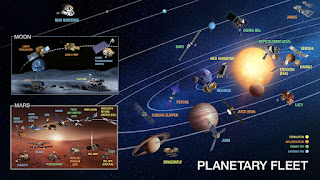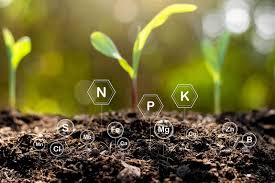[ad_1]
Biochemistry is a branch of science that combines biology and chemistry to study the chemical processes and substances occurring within living organisms. It explores the structure, function, and interactions of biological molecules, such as proteins, nucleic acids, carbohydrates, and lipids, and their roles in various biological processes.
Here are some key aspects and topics related to biochemistry:
Biomolecules: Biochemistry focuses on understanding the structure, properties, and functions of biomolecules. This includes proteins (amino acids), nucleic acids (DNA and RNA), carbohydrates (sugars and polysaccharides), and lipids (fats and oils). It investigates how these molecules are synthesized, modified, and interact with each other within cells.
Enzymes and Enzyme Kinetics: Enzymes are biological catalysts that speed up chemical reactions in living organisms. Biochemistry studies enzyme structure, mechanism, and regulation, as well as the factors influencing enzyme activity. Enzyme kinetics investigates the rates of enzyme-catalyzed reactions and the factors that affect those rates.
Metabolism: Biochemistry examines the metabolic pathways and processes that occur in cells. It explores how biomolecules are broken down (catabolism) to release energy or synthesized (anabolism) for cell growth, maintenance, and reproduction. Metabolic pathways, such as glycolysis, the citric acid cycle, and oxidative phosphorylation, are extensively studied.
Cellular Respiration: Biochemistry investigates the process of cellular respiration, which involves the breakdown of glucose and other molecules to generate energy in the form of ATP (adenosine triphosphate). This includes the processes of glycolysis, the Krebs cycle (also known as the citric acid cycle), and oxidative phosphorylation.
DNA Replication and Protein Synthesis: Biochemistry explores the replication of DNA, the central molecule of heredity, as well as the transcription of DNA into RNA and the translation of RNA into proteins. It investigates the mechanisms and regulation of these processes, including DNA polymerases, RNA polymerases, and the genetic code.
Biochemical Techniques: Biochemistry employs a wide range of laboratory techniques to isolate, purify, analyze, and manipulate biomolecules. These techniques include spectrophotometry, chromatography, electrophoresis, mass spectrometry, recombinant DNA technology, and protein structure determination methods like X-ray crystallography and nuclear magnetic resonance (NMR).
Biochemical Genetics and Disease: Biochemistry plays a crucial role in understanding the genetic basis of diseases. It investigates how genetic mutations or abnormalities in biochemical processes contribute to various disorders, including metabolic diseases, genetic disorders, and cancers. Biochemical analysis is often used for diagnostic purposes and the development of therapeutic interventions.
Biotechnology and Genetic Engineering: Biochemistry has significant applications in biotechnology and genetic engineering. It involves the manipulation and modification of DNA, proteins, and other biomolecules to develop new drugs, vaccines, and genetically modified organisms (GMOs). This includes techniques like gene cloning, gene expression, and protein engineering.
Biochemistry is a dynamic field at the interface of biology and chemistry, providing insights into the fundamental processes that govern life. It has applications in various areas, including medicine, agriculture, pharmaceuticals, and environmental science. The knowledge gained from biochemistry research contributes to advancements in healthcare, biotechnology, and our understanding of life processes.
Biochemistry is the branch of science that explores the chemical processes and substances occurring within living organisms. It combines principles of biology and chemistry to study the structure, function, and interactions of biological molecules and their roles in various biological processes.
Biomolecules: Biochemistry focuses on understanding the structure, properties, and functions of biomolecules. These include proteins, nucleic acids (DNA and RNA), carbohydrates, and lipids. It investigates how these molecules are synthesized, modified, and interact with each other within cells.
Enzymes: Enzymes are biological catalysts that accelerate chemical reactions in living organisms. Biochemistry studies enzyme structure, mechanism, and regulation, as well as the factors influencing enzyme activity. Enzymes play critical roles in metabolic pathways, signal transduction, and cellular regulation.
Metabolism: Biochemistry investigates the metabolic pathways and processes that occur in cells. It explores how biomolecules are broken down (catabolism) to release energy or synthesized (anabolism) for cell growth, maintenance, and reproduction. Metabolism involves various biochemical reactions, such as glycolysis, the citric acid cycle, and oxidative phosphorylation.
Cellular Signaling: Biochemistry explores the mechanisms of cellular communication and signaling pathways. It investigates how cells receive and respond to signals, such as hormones, neurotransmitters, and growth factors. This includes studying signal transduction cascades and intracellular signaling molecules.
Genetic Information: Biochemistry plays a crucial role in understanding the storage and expression of genetic information. It investigates DNA replication, transcription (DNA to RNA), and translation (RNA to proteins). Biochemical analysis helps unravel the structure and function of genes and their regulation.
Structural Biology: Biochemistry employs techniques like X-ray crystallography, nuclear magnetic resonance (NMR), and cryo-electron microscopy to determine the three-dimensional structures of biomolecules. This provides insights into their functions and interactions, aiding in drug design and understanding molecular mechanisms.
Biotechnology and Genetic Engineering: Biochemistry has applications in biotechnology and genetic engineering. It involves the manipulation and modification of DNA, proteins, and other biomolecules for various purposes. This includes gene cloning, recombinant DNA technology, genetic modification of organisms, and the production of pharmaceuticals and enzymes.
Medical Applications: Biochemistry plays a critical role in understanding the molecular basis of diseases. It investigates how genetic mutations, metabolic disorders, and biochemical imbalances contribute to various conditions. Biochemical analysis is used for diagnostic purposes, monitoring treatment responses, and developing targeted therapies.
Research and Careers: Biochemistry research spans a wide range of areas, including molecular biology, enzymology, structural biology, bioinformatics, and systems biology. Biochemists work in academia, pharmaceutical companies, biotechnology firms, research institutes, and healthcare settings.
Biochemistry is a rapidly evolving field that contributes to our understanding of life processes and has significant implications for medicine, agriculture, biotechnology, and environmental science. It continues to advance our knowledge of the molecular mechanisms underlying living organisms and plays a crucial role in addressing global health and societal challenges.
#ProteinBiochemistry
#Enzymology
#Metabolism
#MolecularBiology
#Genetics
#StructuralBiology
#BiochemicalReactions
#MolecularInteractions
#CellularSignaling
#Bioinformatics
#MedicalBiochemistry
#Biotechnology
#ChemicalBiology
#MetabolicPathways
#ProteinExpression
[ad_2]
Source link









